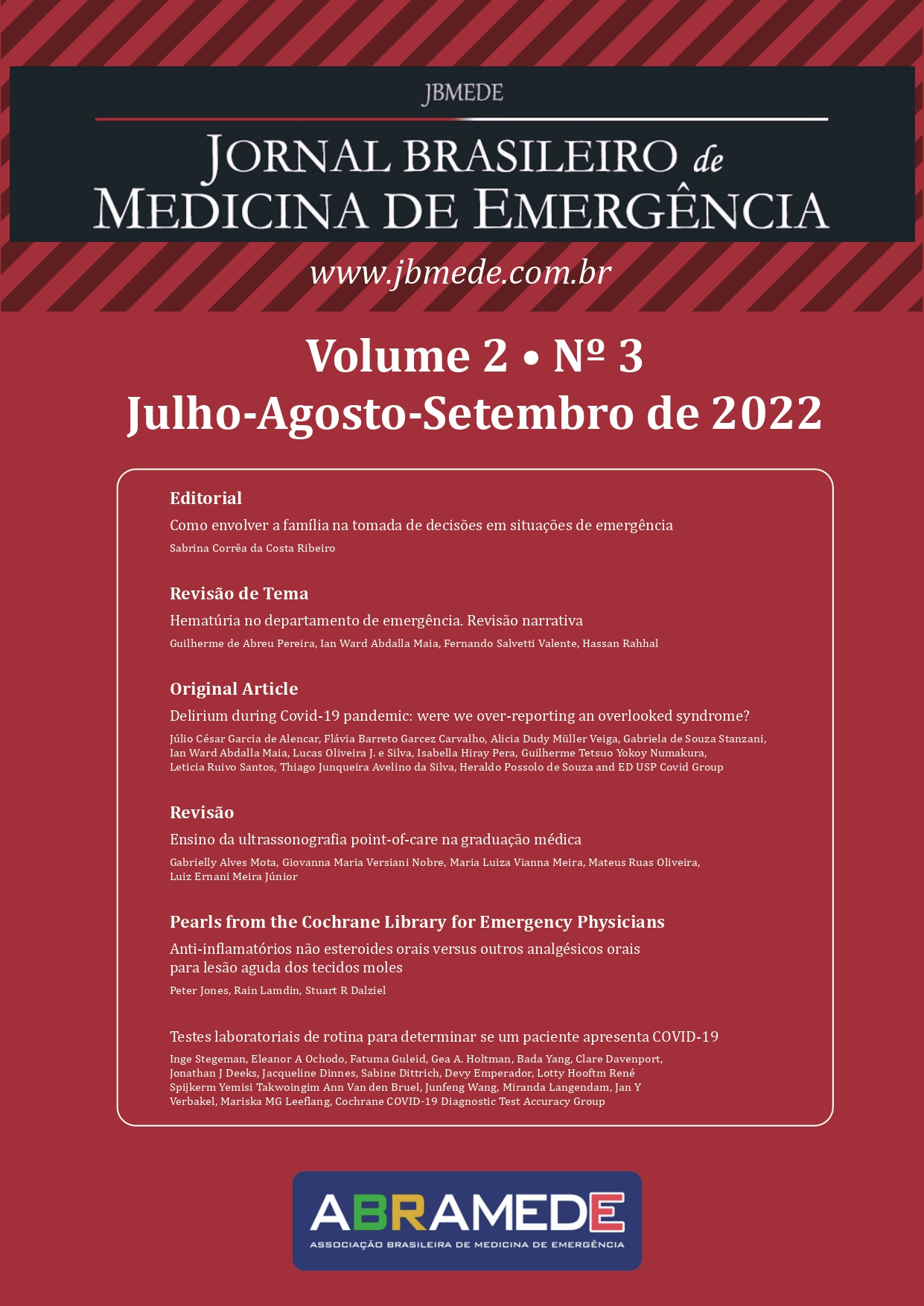Hematuria in the emergency department. A narrative review
Main Article Content
Abstract
Hematuria is a frequent complaint in the Emergency Department, and its approach should be structured. To confirm the existence of hematuria, it is necessary to ascertain the presence of three red cells per high power field, in order to distinguish from other pigments that may change the color of urine. Another fundamental step is to discard the presence of periurethral bleeding such as menstrual one. The hematuria etiology may be clear by history and physical exam in a great portion of conditions, such as urinary tract infection and kidney stones. Hematuria should be classified as microscopic and macroscopic. Microscopic hematuria may be an incidental finding and have an elective investigation, except when associated with kidney dysfunction that could lead to the differential diagnosis of rapidly progressive glomerulonephritis. Whilst macroscopic hematuria needs to be assessed for the risk of urinary obstruction in case of elimination of large clots. Otherwise, the patient may be advised regarding alarm symptoms and be released as well. It is of utmost importance that these patients have follow-up, due to the increased risk of genitourinary cancer, along with the risk of multiple diseases that may progress to chronic kidney disease.
Article Details

This work is licensed under a Creative Commons Attribution 4.0 International License.
References
dddd

